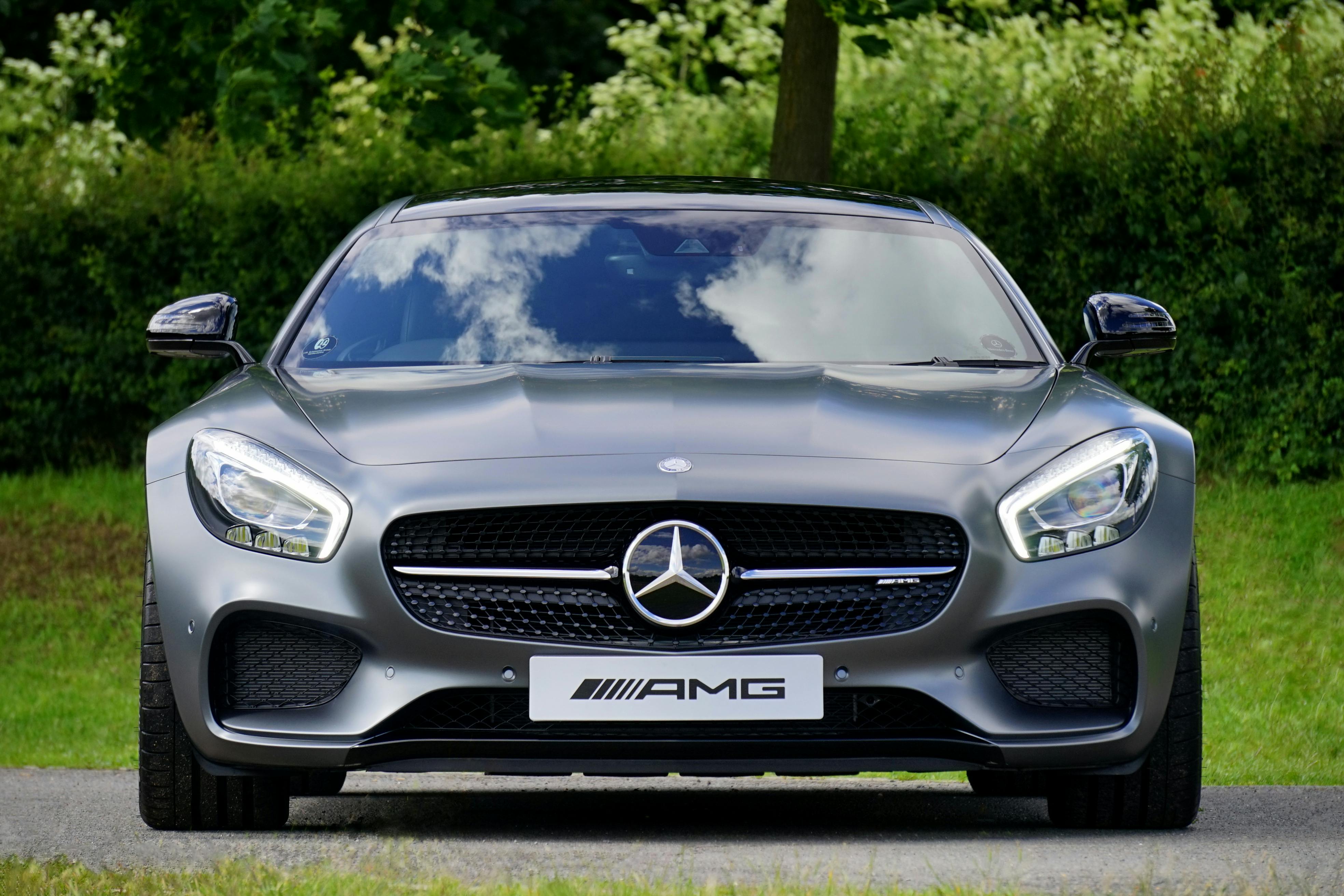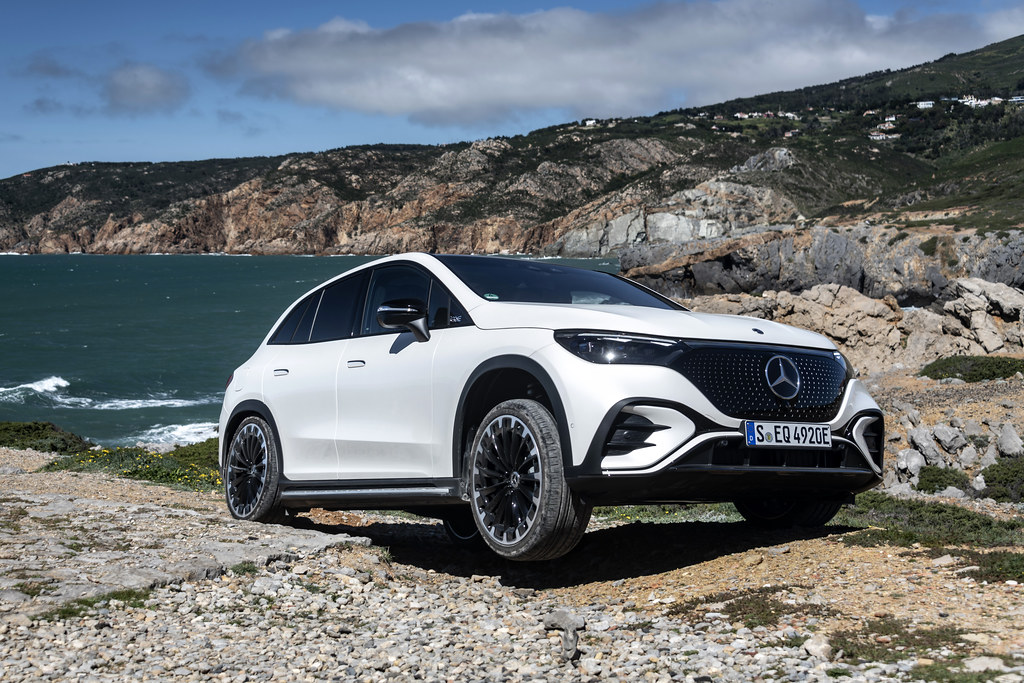
Owning an SUV often embodies the promise of boundless versatility, ample space, and a commanding presence on the road. For many, it represents the ideal vehicle for everything from daily commutes to adventurous family road trips. However, the allure of a new or used SUV can sometimes mask a more challenging reality: the significant financial burden imposed by unexpected and costly repairs. While some models effortlessly deliver hundreds of thousands of miles with minimal fuss, others quickly transform into financial sinkholes, racking up repair bills that can shockingly surpass their resale value.
This article serves as a crucial guide for any prospective buyer, shining a spotlight on specific SUV models that have earned a notorious reputation for high maintenance and repair costs. Our aim is to arm you with objective, data-driven insights, ensuring you’re fully aware of the potential long-term financial commitments before making a purchase. We believe that an informed decision is the best defense against unexpected mechanical failures and spiraling repair expenses.
We will meticulously explore a range of vehicles, from popular compact SUVs to larger family haulers, detailing the common issues that plague them and the financial impact these problems can have on owners. By examining the specific types of repairs these SUVs frequently require, we hope to provide a clear picture of what to expect, helping you navigate the complex world of vehicle ownership with confidence. After all, the true cost of an SUV extends far beyond its initial purchase price, deeply rooted in its long-term reliability and the associated upkeep. Let’s delve into the first seven models that warrant careful consideration.

1. **Ford Escape**The Ford Escape has long been a popular choice in the compact SUV segment, often lauded for its practicality and widespread availability. However, beneath its appealing exterior, this model is unfortunately prone to a significant number of engine problems. Owners frequently report encountering issues that necessitate expensive interventions, making it a vehicle that can swiftly deplete a repair budget.
According to reports, owners of the Ford Escape might face an average expenditure of around $9,100 on maintenance and repairs over a decade. This figure is substantial and reflects the recurring nature of the mechanical challenges associated with the vehicle. The core concern revolves around its engine, where fixes can escalate quickly.
Specific engine repairs for the Ford Escape can cost as much as $3,000, as highlighted by auto industry expert Melanie Musson, who explained, “When an engine is bad, you can expect that it’s going to cost a lot to repair.” Beyond the powertrain, the infotainment system presents another common trouble spot. Issues with this system are not minor, with repair costs potentially ranging from $300 to $1,000, further adding to the cumulative financial strain on owners. This combination of significant engine and electronic problems positions the Ford Escape as an SUV that demands considerable financial foresight.
Car Model Information: 2024 Ford Escape Active
Name: Ford Escape
Caption: 2021 Escape Hybrid (US)
Manufacturer: Ford Motor Company
Aka: Unbulleted list
Production: 2000–present
ModelYears: 2001–present
Class: Compact crossover SUV
BodyStyle: SUV
Layout: Unbulleted list
Predecessor: Nissan Terrano II
Successor: Ford Territory (China)
Categories: 2010s cars, 2020s cars, All-wheel-drive vehicles, All Wikipedia articles written in American English, All articles with dead external links
Summary: The Ford Escape is a compact crossover SUV manufactured and marketed by the Ford Motor Company since the 2001 model year. The first Ford SUV derived from a car platform, the Escape fell below the Ford Explorer in size; the Escape was sized between the Ford EcoSport and Ford Edge. The 2005 model year Ford Escape Hybrid was the first hybrid-electric vehicle from Ford, and the first hybrid produced as an SUV.
The first two generations of the Escape used the Ford CD2 platform (jointly developed with Mazda), leading to the release of the rebadged variants, the Mazda Tribute and Mercury Mariner; as with the Escape, both the Tribute and Mariner were marketed in North America (the Mariner was never marketed in Canada). In Europe, the Escape was initially branded as the Ford Maverick from 2001 to 2008 (replacing a Nissan-produced SUV).
Under the mid-2000s “One Ford” globalization strategy, the third and fourth-generation designs of the Escape have been unified with the Ford Kuga, designed by Ford of Europe. Sharing a common body and chassis underpinnings (and several engines), the Escape and Kuga are manufactured in their home markets. As with previous generations, the fourth-generation Escape is offered with gasoline, hybrid, and plug-in hybrid options. Outside of North America, the Ford Escape is marketed in Australia, China, and Taiwan.
In August 2025, it was announced that Ford will be discontinuing the Escape after the 2026 model year.
Get more information about: Ford Escape
Buying a high-performing used car >>>
Brand: Ford Model: Escape
Price: $20,820 Mileage: 47,663 mi.
Read more about: From Anemic to Awkward: Unmasking 15 Muscle Cars That Truly Missed the Mark – And Why We Can’t Forget Them

2. **Chevrolet Blazer**The Chevrolet Blazer captivates many with its sleek design and an array of modern features, presenting itself as a stylish option in the SUV market. Yet, its attractive aesthetics can belie underlying concerns about its long-term reliability and the potential for considerable repair costs. Experts have voiced specific apprehensions regarding its safety and the financial implications of maintaining it.
When evaluating the total cost of ownership for the Chevrolet Blazer, it becomes evident that the initial purchase price is merely the beginning. Engine problems are a frequent complaint among owners, leading to repair costs that quickly accumulate and can become a significant financial burden. These issues are not always isolated incidents, often proving persistent and requiring multiple visits to service centers.
Beyond engine troubles, drivers have also identified issues with the vehicle’s suspension system. Such problems contribute to an already growing list of potential expenses, making the Blazer an SUV that may demand more from your wallet than its stylish facade suggests. Therefore, careful consideration of these potential long-term costs is crucial before committing to a purchase, as its captivating appearance may inadvertently conceal a series of costly upkeep requirements.
Car Model Information: 2021 Chevrolet Blazer 2LT
Categories: All set index articles, Articles with short description, Cars introduced in 1969, Chevrolet vehicles, Commons category link from Wikidata
Summary: The Chevrolet Blazer is an automobile nameplate used by General Motors for its Chevrolet brand since 1969 for several SUV models:
Full-size Chevrolet K5 Blazer, based on the C/K pickup chassis and built from 1969 to 1995 (renamed Blazer in 1992 and renamed Tahoe in 1995 for the 2-door and 4-door model)
Compact and mid-size Chevrolet S-10 Blazer, based on the S-10 pickup and built from 1983 to 2012
Chevrolet Grand Blazer, sold in Argentina, Brazil and Ecuador from 1990 to 2000
Chevrolet Grand Blazer, full-size sold in Venezuela under the “Grand Blazer” name from 1993 to 1999 (GMT400 platform)
Chevrolet Grand Blazer Z71, sold in Venezuela from 2000 to 2002 (GMT820 platform)
Chevrolet Blazer (crossover), a mid-size crossover produced since 2019
Chevrolet Blazer EV, a battery electric mid-size crossover produced since 2023
Get more information about: Chevrolet Blazer
Buying a high-performing used car >>>
Brand: Chevrolet Model: Blazer
Price: $17,997 Mileage: 86,625 mi.
Read more about: 12 New Cars Named ‘Best Buys’ for 2025: An Expert Guide for Savvy Shoppers
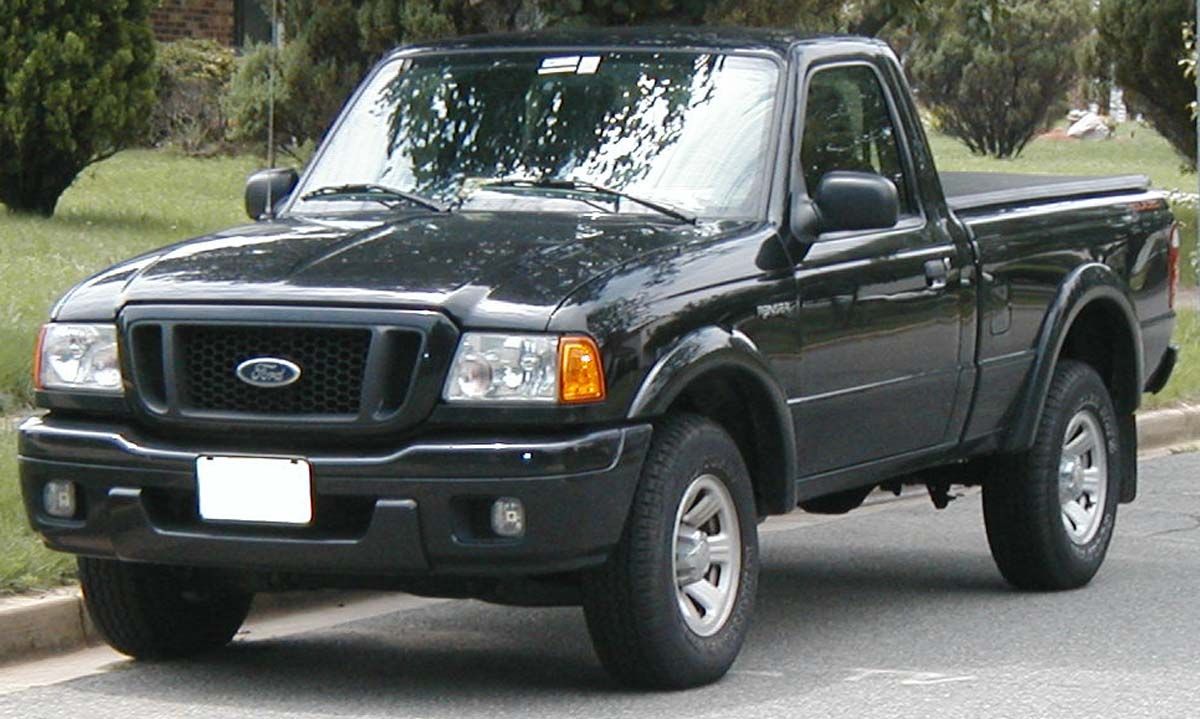
3. **Ford Edge**The Ford Edge is frequently commended for providing a comfortable ride and a spacious interior, making it an attractive option for many families and commuters. Despite these initial appeals, numerous owners have reported facing significant engine issues, which can transform this seemingly advantageous purchase into a substantial financial liability. These potential problems are often unexpected and can lead to considerable expenses.
One particularly alarming instance cited in reports involved a driver who encountered an $8,600 engine replacement shortly after acquiring their Ford Edge. Such an event underscores the potential for truly substantial, unanticipated costs associated with this model. This level of expense can quickly diminish the perceived value and comfort the vehicle initially offered, leading to significant financial stress for owners.
Furthermore, the Ford Edge has a documented history of frequent maintenance needs, which can swiftly elevate it to the status of a financial burden. Common complaints include persistent brake issues that demand regular and costly repairs, alongside a notable prevalence of transmission problems. These recurring mechanical failures solidify the vehicle’s reputation for high upkeep, leaving many owners disappointed in its long-term reliability. Thus, while its smooth ride and attractive features are undeniable, the hidden costs of ongoing maintenance warrant careful consideration.
Car Model Information: 2012 Ford Edge Limited
Name: Ford Edge
Caption: 2019 Ford Edge SEL EcoBoost AWD (US)
Manufacturer: Ford Motor Company
Production: 2006–present
ModelYears: 2007–2024 (CAN/US),2016–2021 (Europe),2015–2019 (UK)
Class: Mid-size crossover SUV
BodyStyle: SUV
Layout: Front-engine, front-wheel-drive layout
Categories: 2010s cars, 2020s cars, All-wheel-drive vehicles, All articles with unsourced statements, Articles with short description
Summary: The Ford Edge is a crossover SUV manufactured and marketed by the Ford Motor Company introduced for the 2007 model year as the first mid-size CUV marketed by Ford in North America. Deriving its name from a trim package of the Ford Ranger, the Ford Edge is positioned between the Ford Escape and the Ford Explorer within the Ford product line.
Production of the North American Edge ended in April 2024, with the third generation Edge (dubbed the Edge L), launched in 2023, being produced and sold exclusively in China.
Sharing its underpinnings with the Ford Fusion sedan, Ford also marketed a rebadged variant as the Lincoln MKX (since 2019, the Lincoln Nautilus). The second generation is also marketed by Ford of Europe, positioned between the Kuga (Escape) and the Explorer PHEV.
Manufacturing of the first two generations took place at Oakville Assembly (Oakville, Ontario) alongside the Nautilus.
Get more information about: Ford Edge
Buying a high-performing used car >>>
Brand: Ford Model: Edge
Price: $9,590 Mileage: 102,543 mi.
Read more about: Wallet Beware: 10 Cars Owners Say Become Major Money Pits After the Initial Thrill

4. **Dodge Journey**The Dodge Journey often attracts buyers seeking a budget-friendly entry point into the versatile SUV market. Its lower initial price tag can make it seem like an economical choice for families. However, this affordability is frequently undermined by significant criticisms regarding its overall reliability, leading to a pattern of frequent and costly repairs.
Owners of the Dodge Journey often find themselves grappling with maintenance costs that are considerably higher than anticipated. The vehicle is notorious for several critical mechanical issues, with engine failures being a known and particularly expensive problem. These failures can result in substantial repair bills, often catching owners off guard and adding unforeseen financial strain.
In addition to engine woes, transmission problems frequently plague the Dodge Journey, further contributing to its reputation for high upkeep. These recurring transmission issues, coupled with other common repairs, accumulate over time, detracting significantly from the vehicle’s initial practicality and perceived value. For families drawn to its spaciousness and convenience, the potential for unexpected and hefty repair expenses makes the Dodge Journey a model that demands thorough scrutiny before purchase.
Car Model Information: 2018 Dodge Journey SE
Name: Dodge Journey
Caption: 2012 Dodge Journey
Manufacturer: Dodge
Aka: Fiat Freemont,Dodge JC (Japan),Dodge JCUV (China)
Production: 2008–2020
ModelYears: 2009–2020,2011–2015 (Freemont)
Assembly: Toluca, Mexico
Designer: Ryan Nagode
Class: Mid-size crossover SUV
BodyStyle: SUV
Platform: Mitsubishi GS platform
Related: Chrysler 200,Chrysler Sebring,Dodge Avenger
Layout: Front-engine, front-wheel-drive layout
Engine: ubl
Transmission: Ultradrive#40TES/41TES
Wheelbase: 2890 mm
Abbr: on
Order: flip
Length: 192.4 in
Width: 72.2 in
Height: 66.6 in
Weight: 3818 lb
Predecessor: Fiat Ulysse,Fiat Croma
Successor: Dodge Journey (2021)
Categories: 2010s cars, 2020s cars, All-wheel-drive vehicles, All articles with dead external links, All articles with unsourced statements
Summary: The Dodge Journey is a mid-size crossover SUV manufactured and marketed by Fiat Chrysler Automobiles’ Dodge brand for model years 2009 to 2020 over a single generation, with a facelift for the 2011 model year. The Journey was styled by Ryan Nagode, and was marketed globally in both left- and right-hand drive, including as the Fiat Freemont.
Internally identified as the JC49, the Journey shares FCA’s global D-segment platform with the Dodge Avenger and a nearly identical wheelbase to the outgoing short-wheelbase (SWB) Dodge Caravan.
Having debuted at the 2007 Frankfurt Motor Show, the Journey subsequently appeared at the 2009 Frankfurt Motor Show. All models were manufactured in Mexico at FCA’s Toluca Assembly facility, with just over 1.1 million manufactured before production ended in 2020.
Get more information about: Dodge Journey
Buying a high-performing used car >>>
Brand: Dodge Model: Journey
Price: $10,995 Mileage: 134,942 mi.
Read more about: From Anemic to Awkward: Unmasking 15 Muscle Cars That Truly Missed the Mark – And Why We Can’t Forget Them
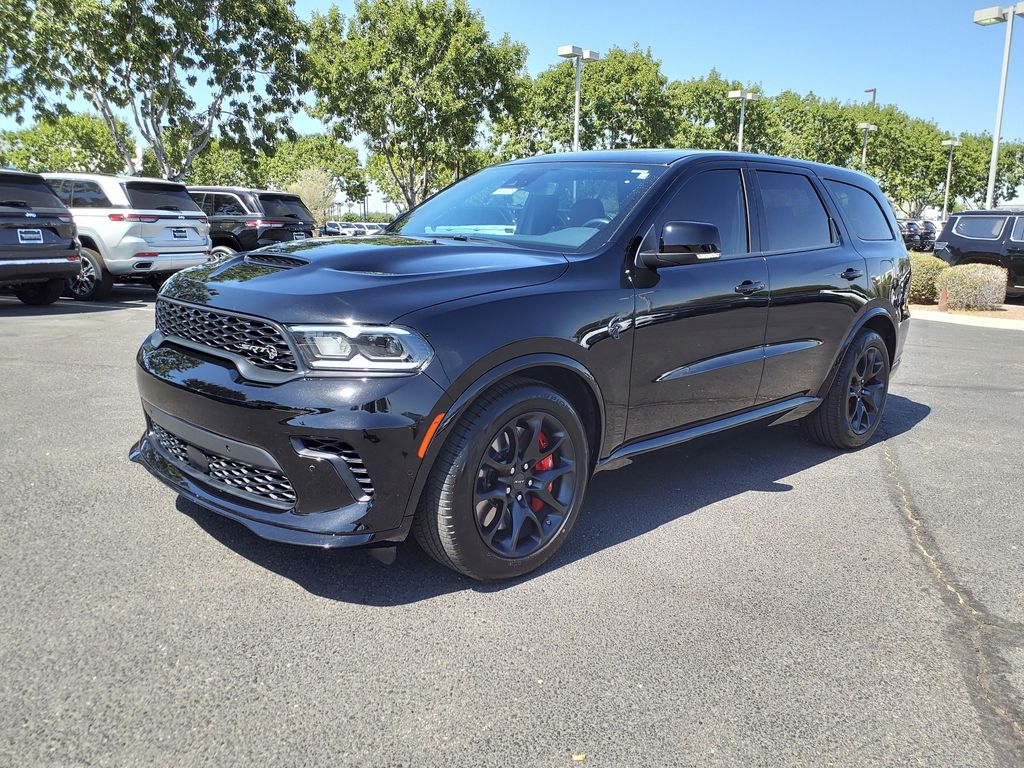
5. **Dodge Durango**The Dodge Durango stands out in the SUV segment with its spacious interior and a range of powerful engine options, appealing to those who desire both utility and performance. However, owning and maintaining this robust SUV can quickly prove to be a costly endeavor, far exceeding average expectations for its class. The financial implications extend well beyond its purchase price, demanding careful budgeting for its upkeep.
Over a ten-year ownership period, Durango owners might anticipate spending approximately $10,189 on maintenance and repairs. This figure is notably higher than the average for SUVs, exceeding it by an estimated $1,309. Such a significant difference indicates a consistent pattern of expensive repair needs. Moreover, there’s a considerable 30.99% chance that the vehicle will require a major repair during this timeframe, highlighting the heightened risk of substantial, unforeseen costs.
Beyond these overarching statistics, the Dodge Durango is frequently cited for specific mechanical vulnerabilities. Transmission issues are a common complaint among owners, often leading to costly repairs that can arise unexpectedly. Furthermore, problems with the vehicle’s electrical system are also known to occur, adding another layer of expense and complexity to its maintenance profile. While the Durango offers undeniable power and style, its ongoing maintenance demands and the heightened potential for major repairs make it an SUV that requires owners to be prepared for significant financial outlays.
Car Model Information: 2012 Dodge Durango Crew
Name: Dodge Durango
Manufacturer: Dodge
Production: 1997–present
Class: Mid-size,SUV
Predecessor: Dodge Ramcharger,Dodge Town Panel and Town Wagon
Related: Dodge Dakota
Layout: Front-engine, rear-wheel-drive layout,automobile layout
Caption: Dodge Durango GT 2021
ModelYears: 1998–2009,2011–present
Categories: 2000s cars, 2010s cars, 2020s cars, All-wheel-drive vehicles, All accuracy disputes
Summary: The Dodge Durango is a mid-size SUV produced by Dodge starting with the 1998 model year. The first two generations were very similar in that both were based on the Dodge Dakota and Dodge Ram, both featured a body-on-frame construction and both were produced at the Newark Assembly Plant in Newark, Delaware through the 2009 model year.
The third-generation Durango began with the 2011 model year. It is built on the same platform as the Jeep Grand Cherokee, features unibody construction, and has been assembled at the Jefferson North Assembly Plant in Detroit, Michigan, since late 2010.
Each generation had options for different engine sizes and power ratings, with different transmissions also. In 2009 a hybrid variant was introduced, but ended quickly with the second generation Durango. From 2007 to 2009 the Durango was available as the Chrysler Aspen from Chrysler. Over two million Durangos have been sold since it was introduced in 1998.
Get more information about: Dodge Durango
Buying a high-performing used car >>>
Brand: DODGE Model: DURANGO
Price: $7,995 Mileage: 161,016 mi.
Read more about: Behind the Badges: Uncovering the Shared DNA of 10 Automotive Icons Built in the Same Factories

6. **Jeep Renegade**The Jeep Renegade presents itself as a distinctive compact SUV, recognized for its unique design and spirited character. Despite its appealing aesthetic and nimble size, the Renegade comes burdened with notably high maintenance costs, positioning it as a vehicle that can quickly become a financial challenge for its owners. The long-term expenses associated with this model are a critical consideration for any prospective buyer.
Over a decade of ownership, individuals can expect to incur approximately $10,083 in maintenance and repairs for a Jeep Renegade. This amount is considerably higher than the average cost for SUVs, surpassing it by an estimated $1,203. Such a substantial difference underscores the Renegade’s tendency to require more frequent and more expensive attention than many of its competitors, impacting the overall affordability of its ownership.
Furthermore, the likelihood of facing a major repair with the Jeep Renegade is also elevated, standing at a significant 31.13% chance during the first ten years of service. This statistic points to a notable risk of encountering substantial, wallet-draining mechanical issues. While the Renegade’s distinctive design and compact utility might be attractive, the cumulative impact of its high maintenance costs and the pronounced risk of major repairs make it an SUV that demands a well-prepared budget and an awareness of potential financial burdens.
Car Model Information: 1993 Jeep Wrangler Renegade
Name: Jeep Renegade
Manufacturer: Jeep
Production: 2014–present
ModelYears: 2015–2023 (US & Canada),2015–present (Mexico)
Assembly: ubl
Designer: Jeremy Glover and Ian Hedge
Class: Subcompact crossover SUV
BodyStyle: SUV
Layout: Front-engine, front-wheel-drive layout
Platform: GM Fiat Small platform
Related: Fiat 500X,Fiat 500L,Fiat Tipo (2015),Fiat Toro
Engine: ubl
Motor: 45 kW
Abbr: on
Transmission: Fiat Powertrain Technologies,Fiat Powertrain Technologies,Fiat Powertrain Technologies,Fiat Powertrain Technologies,Aisin,Fiat Powertrain Technologies,ZF Friedrichshafen
Battery: lithium-ion battery
Drivetrain: PHEV
Wheelbase: 101.2 in
Length: 166.6 in
Width: 71.1 in
Height: 66.5 in
Weight: convert
Sp: us
Categories: 2020s cars, All-wheel-drive vehicles, All articles with bare URLs for citations, Articles with PDF format bare URLs for citations, Articles with bare URLs for citations from August 2024
Summary: The Jeep Renegade is a subcompact crossover SUV produced by Stellantis under their Jeep marque. It was first shown to the public in March 2014 at the Geneva Motor Show and production started in late August of that year. The Renegade was the smallest vehicle currently marketed by Jeep, until the arrival of the Avenger. It slots between the Avenger and the Compass. It is based on the FCA Small Wide 4×4 platform, which is also shared with other FCA models, including those from Fiat and Alfa Romeo brands.
The Renegade comes as standard with front-wheel drive, with optional four-wheel drive systems Active Drive I and Active Drive Low, both of which are paired with Jeep’s Selec-Terrain System.
Get more information about: Jeep Renegade
Buying a high-performing used car >>>
Brand: Jeep Model: Renegade
Price: $15,995 Mileage: 82,476 mi.
Read more about: Behind the Badges: Uncovering the Shared DNA of 10 Automotive Icons Built in the Same Factories
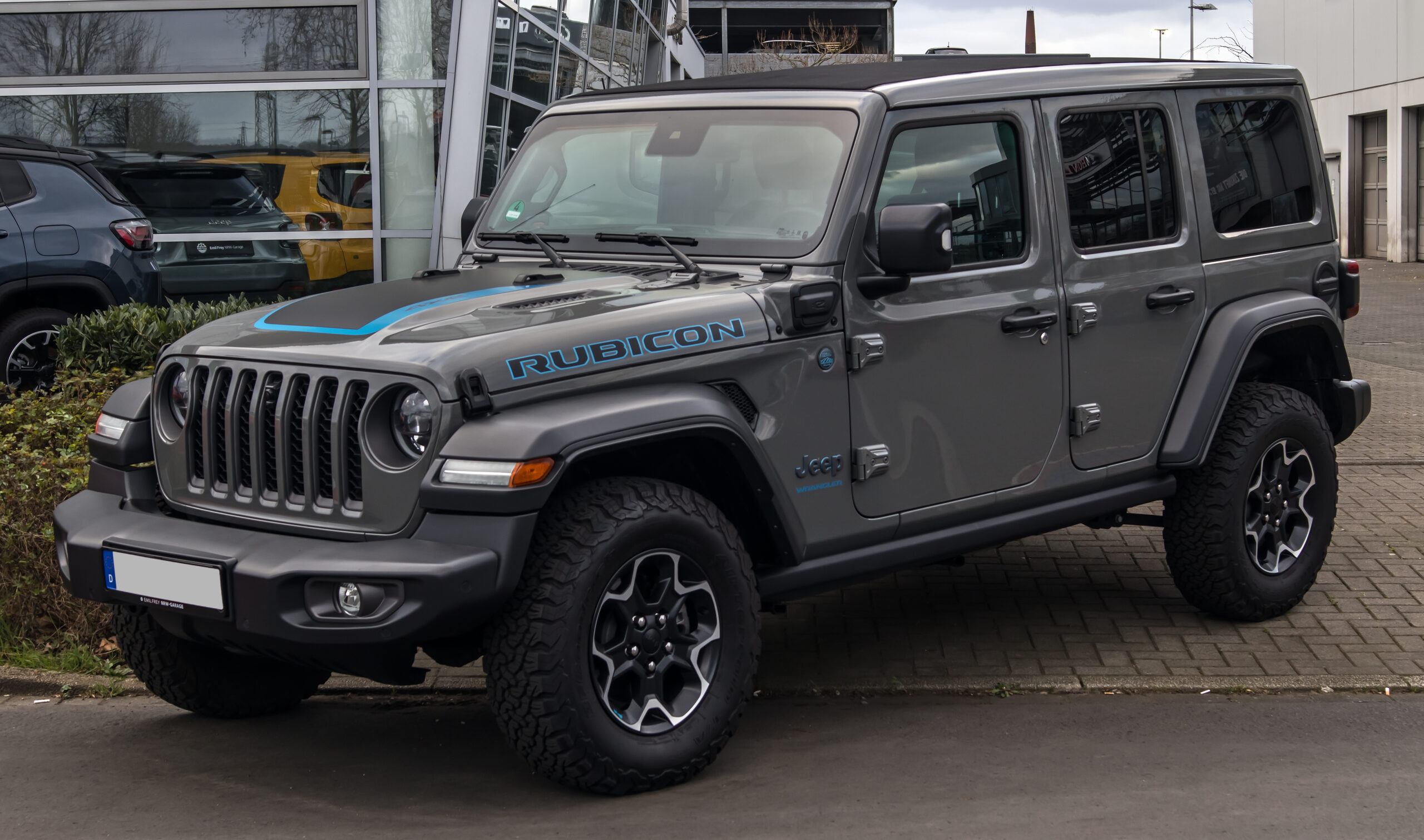
7. **Jeep Wrangler**The Jeep Wrangler is an iconic SUV, celebrated worldwide for its rugged off-road capabilities and distinctive, adventurous spirit. While it undoubtedly delivers unparalleled performance in challenging terrains, this robust functionality comes at a significant cost in terms of maintenance and repairs. Owners often find that the thrilling experience of a Wrangler is accompanied by a consistent demand for upkeep.
Over a ten-year period, the average cost for maintenance and repairs on a Jeep Wrangler hovers around $10,662. This figure positions the Wrangler among the higher-cost vehicles to maintain, reflecting a pattern of recurring issues that can chip away at an owner’s finances. Melanie Musson, an auto industry expert, notes that while it’s an American favorite, budgeting for repairs is essential for long-term ownership.
Common problems that contribute to these high costs include water pump replacements, which typically cost about $700. Oil leak repairs are another frequent concern, potentially running up to $1,000 depending on the severity and location of the problem, with Musson explicitly stating, “Leaks are a common problem, though.” Additionally, reports indicate issues with the suspension and electrical systems, both of which can lead to frequent and expensive repairs. Thus, while the Wrangler offers an unmatched sense of adventure, owners must be prepared for the financial realities of keeping this rugged vehicle in top condition.
While the previous section highlighted several mainstream SUVs that can become financial liabilities, our journey into the world of costly repairs doesn’t end there. The allure of luxury, advanced technology, or even specific design choices can sometimes mask an even greater propensity for expense when it comes to long-term ownership. For many buyers, the dream of owning a premium SUV is synonymous with sophisticated engineering and unparalleled comfort. However, a deeper dive into their operational realities reveals that these high-end vehicles, and some other popular models, can also quickly transform into demanding investments, requiring significant outlays for their often complex and specialized repairs.
This second part of our comprehensive guide continues to arm you with critical knowledge, spotlighting seven additional SUVs that have a reputation for demanding expensive repairs, often well before the 70,000-mile mark. We’ll explore how issues ranging from intricate luxury components to persistent drivetrain problems and electrical system failures can severely impact the long-term value and affordability of these vehicles. Our objective remains clear: to provide unbiased, actionable advice, helping you make a truly informed decision that safeguards your wallet against unforeseen mechanical woes. Let’s delve into these next seven models that warrant careful scrutiny.
Car Model Information: 2019 Jeep Wrangler Sport
Name: Jeep Wrangler
Caption: Jeep Wrangler Unlimited, Sahara edition
Manufacturer: Jeep
Class: Compact SUV
Production: 1986–present
Predecessor: Jeep CJ
Layout: Front-engine, rear-wheel-drive layout,rear-wheel drive
Chassis: Body-on-frame
Related: AIL Storm
Categories: 1980s cars, 1990s cars, 2000s cars, 2010s cars, All-wheel-drive vehicles
Summary: The Jeep Wrangler is a series of compact and mid-size four-wheel drive off-road SUVs manufactured by Jeep since 1986, and currently in its fourth generation. The Wrangler JL, the most recent generation, was unveiled in late 2017 and is produced at Jeep’s Toledo Complex.
The Wrangler is a direct progression from the World War II Jeep, through the CJ (Civilian Jeeps) produced by Willys, Kaiser-Jeep, and American Motors Corporation (AMC) from the mid-1940s through the 1980s. Although neither AMC nor Chrysler (after it purchased AMC in 1987) have claimed that the Wrangler was a direct descendant of the original military model — both the CJ Jeeps and the conceptually consistent Wrangler, with their solid axles and open top, have been called the Jeep model as central to Jeep’s brand identity as the rear-engine 911 is to Porsche.
Similar to the Willys MB and the CJ Jeeps before it, all Wrangler models continue to use a separate body and frame, rigid live axles both front and rear, a tapering nose design with flared fenders, a fold-flat windshield, and can be driven without doors. Also, with few exceptions, they have part-time four-wheel drive systems, with the choice of high and low gearing, and standard open bodies with removable hard or soft tops. However, the Wrangler series was specifically redesigned to be safer and more comfortable on-road, to attract more daily drivers, by upgrading its suspension, drivetrain, and interior, compared to the CJ line. The suspension on all Wranglers included trackbars and anti-roll bars, and, from the 1997 TJ onwards, front and rear coil springs instead of the previous leaf springs.
From 2004 on, the Wrangler has been complemented with long-wheelbase versions, called Wrangler Unlimited. 2004-2006 models were longer versions with 2 doors. In 2004, only automatic transmission-equipped “Unlimited” versions were sold. In 2005, both an automatic and manual 6-speed (NSG-370) were offered. Since 2007, the long-wheelbase Wranglers were four-door models, offering over 20 in (508 mm) more room. By mid-2017, the four-door models represented three-quarters of all new Wranglers on the market.
Get more information about: Jeep Wrangler
Buying a high-performing used car >>>
Brand: Jeep Model: Wrangler
Price: $19,977 Mileage: 68,026 mi.
Read more about: Where Did They Go? 14 Beloved Automotive Icons That Vanished from Our Roads, Stirring Nostalgia and Sparking Curiosity

8. **Audi Q7**The Audi Q7 captivates with its luxurious full-size presence, stylish design, and a wealth of high-end features. However, beneath this sophisticated veneer lies a potential for frequent and expensive repairs that can be a significant headache for owners not prepared for such costs. Its complex air suspension system is a particular area of concern, frequently failing after only a few years of use and necessitating costly interventions.
When the Q7’s air suspension system malfunctions, repairs can quickly escalate into thousands of dollars, making it one of the primary financial burdens associated with this model. This is not a minor inconvenience but a substantial structural issue that directly impacts the vehicle’s ride quality and safety. Owners often find themselves facing these significant expenses once the vehicle’s initial warranty period has expired.
Furthermore, the Q7’s engine and transmission, particularly in the 3.0-liter V6 and 4.2-liter V8 variants, are notorious for suffering from premature wear. Issues with the timing chain tensioners in these engines are a common complaint, often requiring extensive and costly repairs to prevent catastrophic engine failure. This highlights a fundamental engineering vulnerability that can lead to unforeseen and hefty repair bills.
Adding to the list of potential problems, electrical issues are also commonly reported with the Audi Q7. From malfunctioning sensors that impact vehicle performance to faulty electronic control modules (ECMs) that dictate various vehicle functions, these problems often require expensive replacements. While routine maintenance for the Q7 can be managed, the combination of complex mechanical failures, expensive parts, and specialized labor means the repair costs can quickly accumulate, severely impacting its long-term ownership value.
Car Model Information: 2021 Audi Q7 55 Premium Plus
Name: Audi Q7
Manufacturer: Audi AG
Production: November 2005–present
ModelYears: 2006–present
Class: Full-size,luxury SUV
BodyStyle: SUV
Layout: Longitudinal engine,front-engine, four-wheel-drive
Sp: uk
Categories: 2010s cars, 2020s cars, All-wheel-drive vehicles, All Wikipedia articles written in British English, All articles with dead external links
Summary: The Audi Q7 is a crossover SUV made by the German manufacturer Audi, unveiled in September 2005 at the Frankfurt Motor Show. Production of this seven-seater SUV began in November 2005 at the Volkswagen Bratislava Plant in Bratislava, Slovakia.
The Q7 was the first SUV sold by Audi and went on sale in 2006. Later, Audi’s second SUV, the Q5, was unveiled as a 2009 model. Audi has since unveiled a third SUV model, the Q3, which went on sale in the third quarter of 2011, and a fourth SUV model, the Q2, which went on sale in November 2016. The Q7 shares a Volkswagen Group MLB platform and chassis with the Bentley Bentayga, Lamborghini Urus, Porsche Cayenne and the Volkswagen Touareg.
The Q7 is the second largest vehicle from Audi, being surpassed by the Q6 since 2022. While the Q7 has been the flagship SUV in Audi’s product portfolio, a top-of-the-line model with a lower roof, called the Audi Q8, was released in 2018.
It was one of the vehicles involved in the Volkswagen emissions scandal, with the company ordered to buy back some of the affected cars manufactured between 2009 and 2012. The Q7 is also subject to hundreds of NTSB complaints with many relating to potentially catastrophic engine failure issues, and a class-action lawsuit related to squealing brakes.
Get more information about: Audi Q7
Buying a high-performing used car >>>
Brand: Audi Model: Q7
Price: $29,991 Mileage: 52,765 mi.
Read more about: Don’t Waste Your Cash: 6 SUVs Prone to Costly Early Fixes
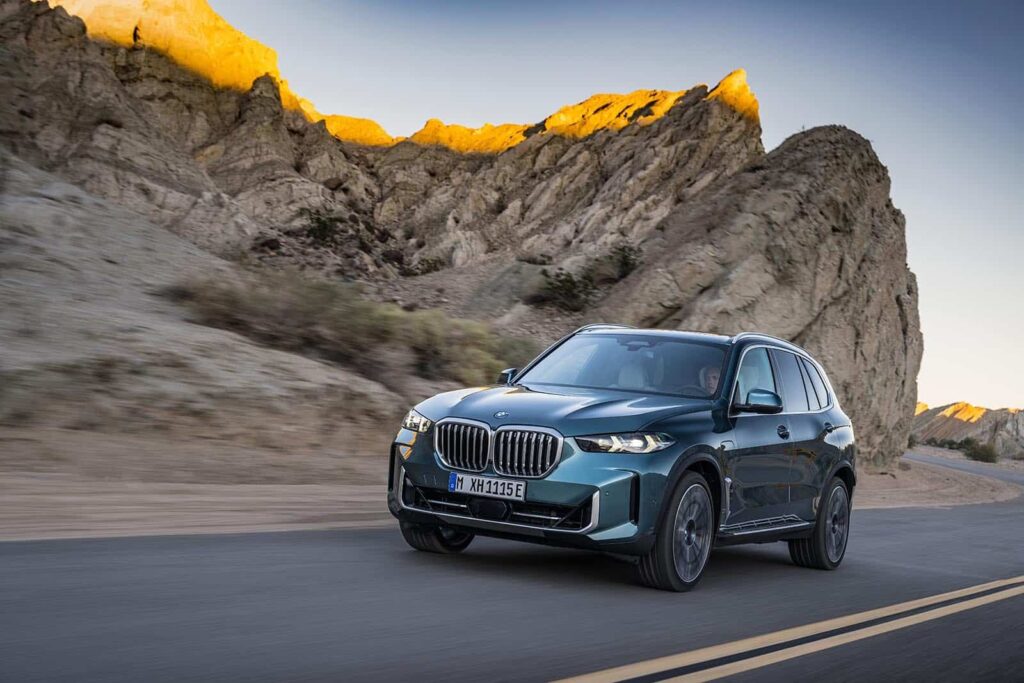
9. **BMW X5**The BMW X5 is widely admired as a popular luxury SUV, celebrated for its sleek design, powerful engine options, and cutting-edge features that promise an exhilarating driving experience. Yet, this German engineering marvel is equally infamous for its remarkably high repair costs, making it a demanding vehicle to maintain over its lifespan. A significant contributor to these expenses is its complex drivetrain, which incorporates sophisticated systems that, while enhancing performance, are also prone to expensive failures.
The vehicle’s automatic transmission and its electronically controlled suspension system are frequently cited as trouble spots. The suspension, especially its air springs, has a known propensity for failure, often occurring between 60,000 and 80,000 miles. Addressing these suspension issues requires costly repairs or even full replacements, substantially adding to the vehicle’s upkeep.
Engine problems, particularly within the turbocharged variants of the X5, represent another common and expensive area of concern. These advanced engines demand frequent attention to prevent issues such as oil leaks and excessive oil consumption, which can quickly escalate if not addressed. Additionally, critical components like the timing chain and water pump are known trouble spots, with their replacements being both labor-intensive and costly.
Beyond mechanical woes, the X5’s intricate electrical system can also prove troublesome for owners. Reported issues include problems with the alternator, various sensors, and complex control modules, all of which require specialized diagnostic skills and expensive parts for repair. The cumulative effect of these labor-intensive repairs, especially those involving the engine and transmission, can easily run into thousands of dollars, solidifying the BMW X5’s reputation as a luxury SUV better suited for those who are fully prepared for a premium on ownership costs.
Car Model Information: 2022 BMW X5 xDrive40i
Name: BMW X5
Manufacturer: BMW
Class: Mid-size,luxury vehicle,crossover SUV
BodyStyle: SUV
Production: 1999–present
Layout: Front-engine, four-wheel-drive layout,Front-engine, rear-wheel-drive layout
Categories: 2000s cars, 2010s cars, All-wheel-drive vehicles, All articles with unsourced statements, Articles with short description
Summary: The BMW X5 is a mid-size luxury crossover SUV produced by BMW. The X5 made its debut in 1999 as the E53 model. It was BMW’s first SUV. At launch, it featured all-wheel drive and was available with either a manual or automatic gearbox. The second generation was launched in 2006, and was known internally as the E70. The E70 featured the torque-split capable xDrive all-wheel drive system mated to an automatic gearbox. In 2009, the X5 M performance variant was released as a 2010 model.
BMW marketed the X5 officially as a “Sports Activity Vehicle” (SAV), rather than an SUV, to indicate its on-road handling capability despite its large dimensions. The X5 signaled a shift away from the utilisation of body-on-frame construction, in favour of more modern monocoque chassis construction. Although the Mercedes-Benz M-Class was introduced more than a year prior to the X5, the X5 was the first to utilise a monocoque chassis. The M-Class used body-on-frame construction until its second generation.
The X5 is primarily manufactured in North America, at BMW Group Plant Spartanburg. Assembly operations also took place in Russia by Avtotor until February 2022, along with operations in India, Indonesia, Malaysia, and Thailand. The X5 is also modified for armoured security versions, at the BMW de México Toluca plant.
The automaker’s SAV series, which was started by the X5, has expanded with derivations of other number-series BMWs. This began in 2003 with the X3, and continued in 2008 with the X6 (which shares its platform with the X5).
Get more information about: BMW X5
Buying a high-performing used car >>>
Brand: BMW Model: X5
Price: $41,491 Mileage: 39,525 mi.
Read more about: Don’t Waste Your Cash: 6 SUVs Prone to Costly Early Fixes
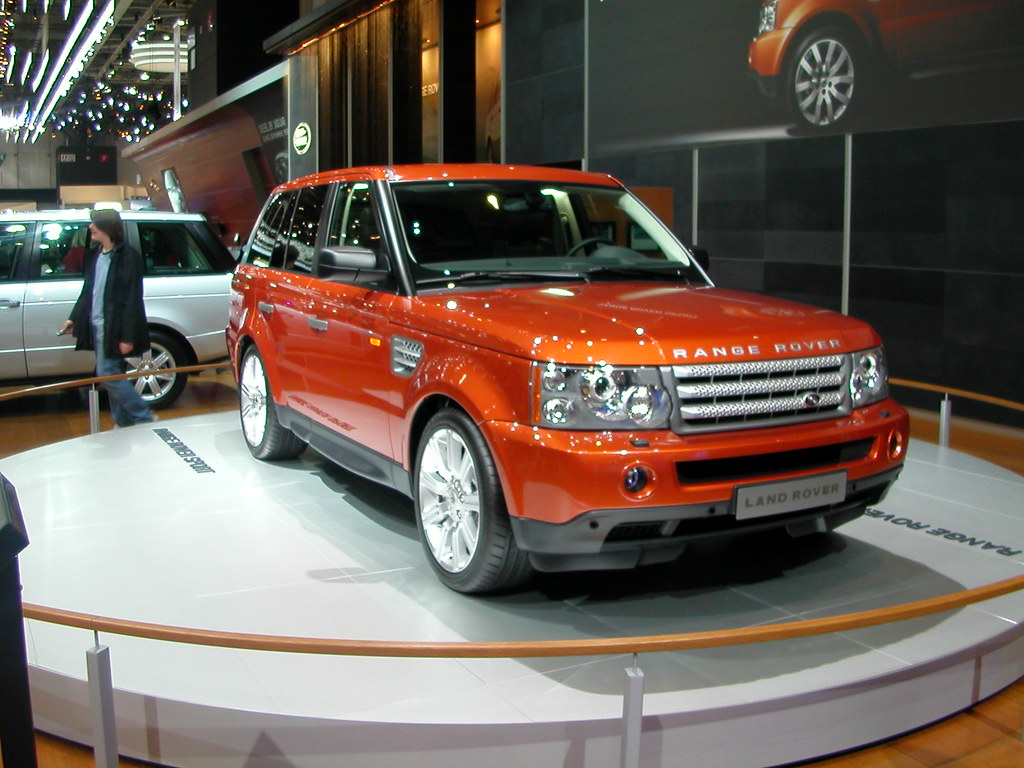
10. **Land Rover Range Rover**The Land Rover Range Rover is an iconic vehicle, synonymous with unparalleled luxury, a commanding presence, and formidable off-road capabilities. However, its distinguished reputation often comes with a significant caveat: a notorious history of reliability issues and a propensity for exceptionally expensive repairs. This blend of luxury and mechanical vulnerability makes it a financially challenging SUV to own, especially as it ages.
One of the most frequently reported and costly problems with the Range Rover is its complex air suspension system. This sophisticated component, designed to provide its signature smooth ride and variable ground clearance, often fails prematurely, sometimes after just a few years of use. When this critical system gives out, the cost of replacement can be astronomical, with reports indicating expenses that can easily exceed $2,000 for a single repair.
Moreover, the Range Rover’s complex drivetrain, featuring powerful 3.0-liter V6 and 5.0-liter V8 engines, is prone to a range of significant problems. Owners commonly report issues such as persistent oil leaks, failures within the intricate cooling system, and problems with the turbocharger units. These engine-related repairs are not only costly due to the price of specialized parts but also time-consuming, becoming an even greater financial burden once the vehicle is no longer under warranty.
Adding to the operational challenges are the frequent electrical gremlins that plague many Range Rover models. Faulty sensors, navigation system failures, and recurring issues with the advanced infotainment system are commonly reported by owners, creating frustrating and expensive diagnostic and repair scenarios. The combination of prohibitively expensive parts, the inherent complexity of its systems, and the high labor charges from specialized dealerships or repair shops firmly establishes the Range Rover as one of the most expensive luxury SUVs to maintain over the long term, demanding owners to be financially prepared for its ongoing upkeep.
Car Model Information: 2024 Ford Mustang GT Premium
Caption: 2022 Range Rover SE P440e (L460, fifth generation, United Kingdom)
Aka: unbulleted list
Name: Range Rover
Manufacturer: unbulleted list
Production: 1969–present
Assembly: unbulleted list
Class: unbulleted list
Layout: Front-engine, four-wheel-drive layout
Sp: uk
Categories: 1980s cars, 1990s cars, 2000s cars, 2010s cars, 2020s cars
Summary: The Land Rover Range Rover, generally shortened to Range Rover, is a 4WD luxury mid to full size crossover marque and sub-brand of Jaguar Land Rover, owned by India-based Tata Motors. The Range Rover line was launched in 1970 by British Leyland and since 2022 is in its fifth generation.
Additional models have been launched under the Range Rover name, including the Range Rover Sport, Range Rover Evoque, and Range Rover Velar.
Get more information about: Range Rover
Buying a high-performing used car >>>
Brand: Land Rover Model: Range Rover
Price: $48,997 Mileage: 24,328 mi.
Read more about: 15 Classic Cars You Might Want To Skip: An Expert Guide for Discerning Collectors
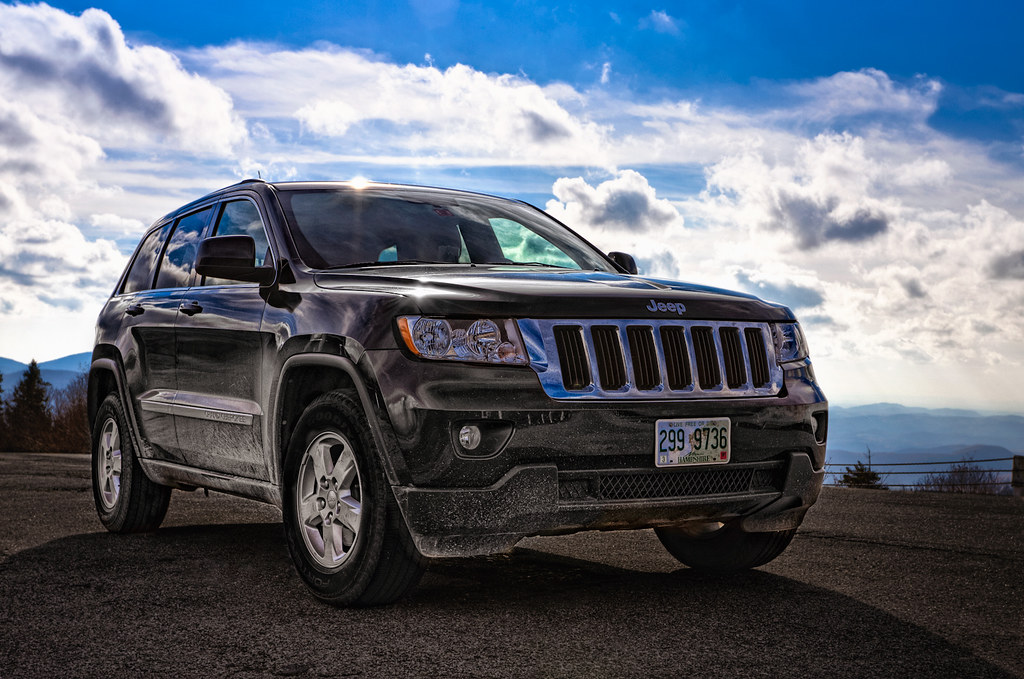
11. **Jeep Grand Cherokee**The Jeep Grand Cherokee is a beloved mid-size SUV, revered for its robust off-road capabilities and a wide array of engine options that cater to various driving preferences. Despite its widespread popularity and rugged appeal, this SUV has an extensive history of mechanical issues that frequently culminate in expensive repairs, making it a model that demands careful financial consideration from prospective buyers.
Among the most common and concerning problems with the Grand Cherokee are those related to its transmission, particularly evident in models from 2011 to 2014. Owners often report malfunctions with the transmission control module (TCM), leading to erratic shifting issues that can be frustrating and dangerous. In many cases, these problems necessitate costly repairs or even the complete replacement of the entire transmission system, representing a substantial unexpected expense.
Furthermore, the air suspension system, which is a desirable feature on higher trim levels of the Grand Cherokee, is unfortunately known for premature failure. When this sophisticated system fails, the repair costs can be exceptionally high, diminishing the perceived value of the luxury features it initially offered. This adds another layer of potential financial burden beyond the standard mechanical components.
Beyond these major systems, the Grand Cherokee has also been plagued by other recurring issues, including faulty fuel pumps, persistent leaking oil filters, and various problems within the vehicle’s electrical system, such as malfunctioning sensors and wiring issues. While the 3.6-liter V6 and 5.7-liter V8 engines are generally durable, reports of cylinder misfires, excessive oil consumption, and water pump failures also contribute to the vehicle’s overall high maintenance profile. Consequently, while the Grand Cherokee offers undeniable off-road prowess and a comfortable interior, its tendency for mechanical failures means owners should budget for significant repair costs throughout its lifespan.
Car Model Information: 2021 Nissan Rogue SL
Name: Jeep Grand Cherokee
Manufacturer: Jeep
Production: 1992–present
ModelYears: 1993–present
Class: unbulleted list
BodyStyle: sport utility vehicle
Layout: unbulleted list
Chassis: Vehicle_frame#Uniframe
Categories: 2000s cars, 2010s cars, 2020s cars, All-wheel-drive vehicles, All Wikipedia articles written in American English
Summary: The Jeep Grand Cherokee is a range of mid-sized sport utility vehicles produced by American manufacturer Jeep. At its introduction, while most SUVs were still manufactured with body-on-frame construction, the Grand Cherokee has used a unibody chassis from the start.
Get more information about: Jeep Grand Cherokee
Buying a high-performing used car >>>
Brand: Jeep Model: Grand Cherokee
Price: $20,995 Mileage: 117,217 mi.
Read more about: Buyer’s Alert: 7 SUVs Prone to Major Breakdowns Before Hitting 80,000 Miles
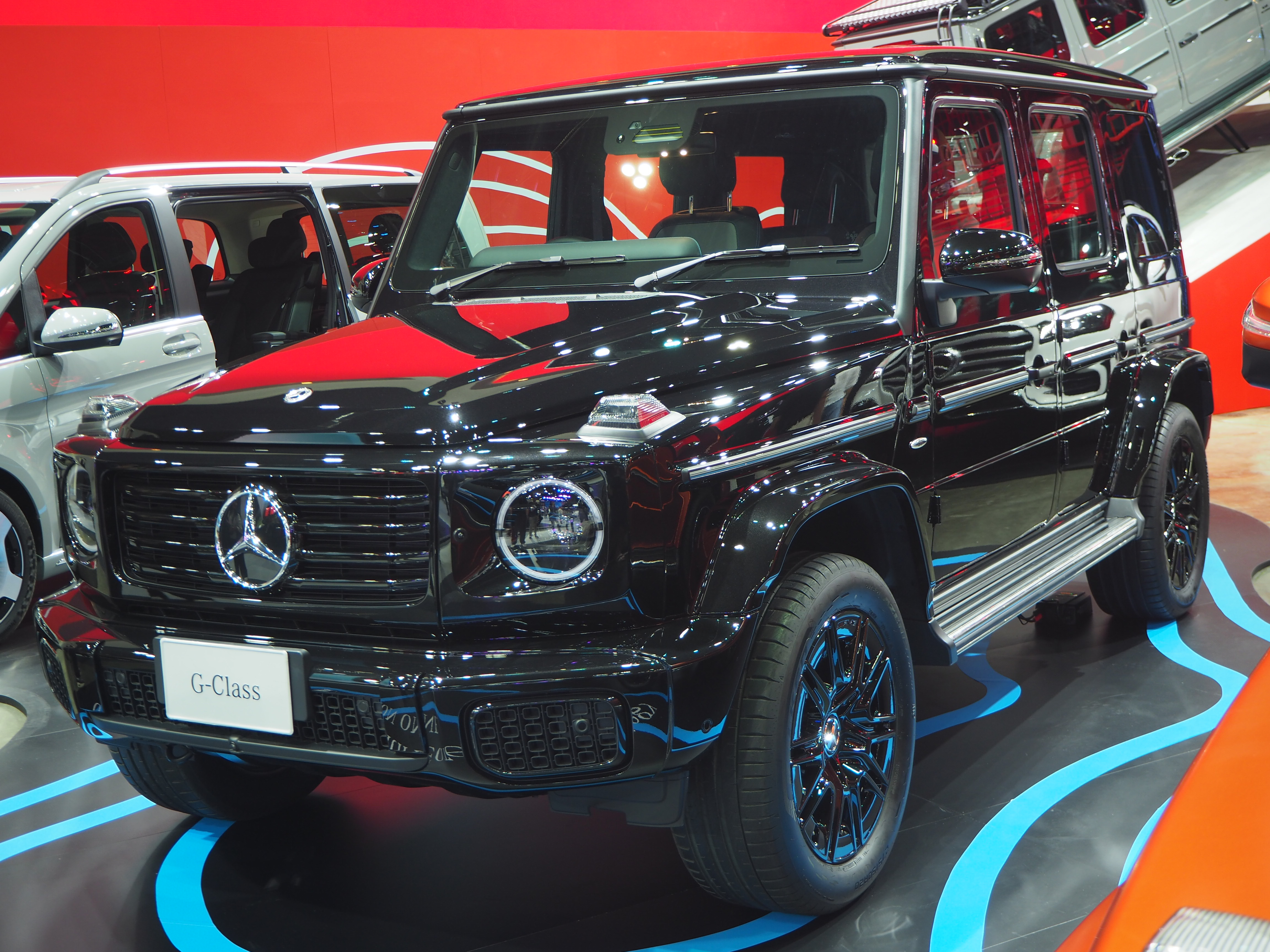
12. **Mercedes-Benz G-Class**The Mercedes-Benz G-Class stands as an undisputed icon in the luxury SUV segment, instantly recognizable for its distinctive, boxy styling, formidable off-road prowess, and high-performance capabilities. While it delivers an undeniably superior driving experience, the prestige of owning a G-Class comes with a significant caveat: its notoriously high repair costs, which are a major drawback for many potential owners.
At the heart of the G-Class’s operational demands is its exceedingly complex powertrain, which features a potent twin-turbocharged V8 engine, a highly advanced suspension system, and an array of high-tech features. While these components are engineered to provide exceptional performance and comfort, their intricate design means they are also more prone to failures that lead to exceptionally expensive repairs when things go wrong.
The transmission system of the G-Class, in particular, has been a known source of issues for owners, with reports of erratic shifting and, in some more severe cases, total transmission failure. These are not minor fixes; such problems often require extensive labor and prohibitively expensive parts to resolve. Additionally, the vehicle’s sophisticated air suspension system, designed for both comfort and off-road capability, can fail over time, resulting in replacements that can easily run well into the thousands of dollars.
Moreover, the G-Class is infamous for its high-maintenance electrical system, which is rife with potential problems related to its complex wiring and numerous electronic control units. Diagnosing and rectifying these electrical gremlins can be incredibly challenging and costly. Parts for the G-Class are inherently expensive, and the labor costs are further inflated because specialized technicians, often found only at authorized dealerships, are required to work on these intricate vehicles. Despite its status as a luxury symbol, the true cost of ownership for a G-Class can be prohibitively high, especially when considering the frequency and severity of its mechanical issues. Therefore, prospective buyers must be prepared for substantial repair bills down the line.
Read more about: Don’t Waste Your Cash: 6 SUVs Prone to Costly Early Fixes
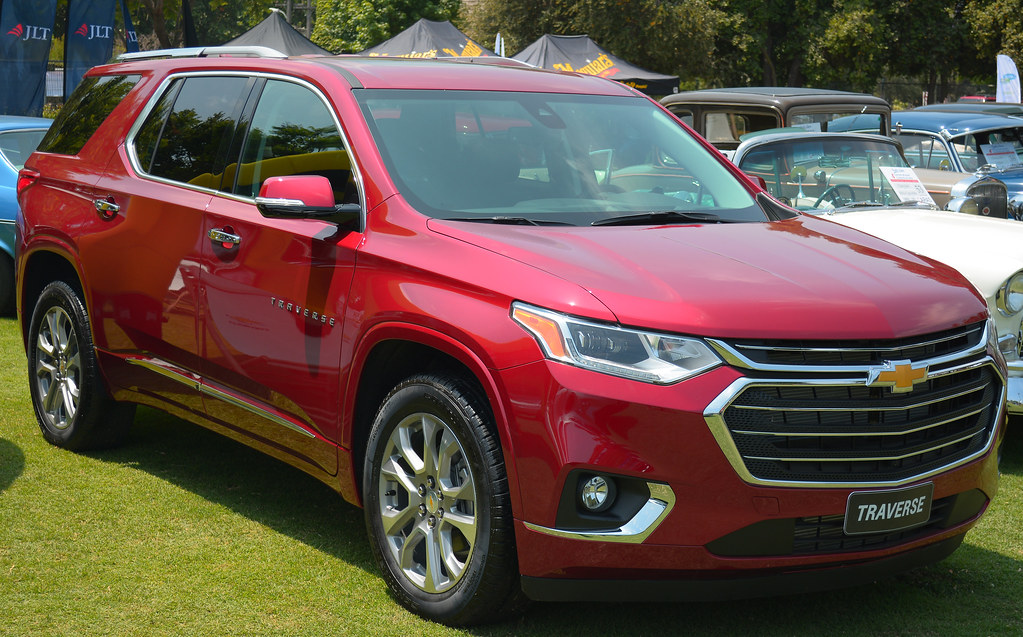
13. **Chevrolet Traverse**The Chevrolet Traverse is a popular choice for families, offering an abundance of room and seating capacity, making it seem like an ideal vehicle for daily commutes and road trips alike. However, many owners are often taken by surprise when confronted with the unexpectedly high and frequent maintenance costs associated with this spacious SUV. This can quickly overshadow its initial appeal and lead to considerable financial strain.
Among the most frequent complaints regarding the Traverse are problems related to its transmission system. These issues are not only common but also often lead to expensive repairs, which can seriously deplete a household’s budget. Transmission woes can manifest as rough shifting, slipping gears, or even complete failure, all requiring significant interventions from a mechanic.
In addition to powertrain issues, the Traverse is also susceptible to various electronic glitches. These can range from minor annoyances with the infotainment system to more critical failures affecting vehicle sensors and controls, all contributing to additional headaches and unexpected repair bills. Many owners report finding themselves regularly visiting the mechanic, transforming what was intended as a practical family vehicle into a source of frustration.
Despite the comfortable ride and convenience offered by its roomy interior, the hidden costs of owning a Chevrolet Traverse can be overwhelming. Buyers considering this SUV must be prepared for the potential for unexpected and substantial expenses that may arise over time. The cumulative burden of maintenance often takes center stage, unfortunately diminishing the practicality and comfort it initially promises to provide.
Car Model Information: 2019 Chevrolet Traverse LS
Name: Chevrolet Traverse
Caption: 2025 Chevrolet Traverse RS
Manufacturer: General Motors
Production: 2008–present
ModelYears: 2009–present
Class: Full-size crossover SUV
Layout: ubl
Predecessor: Chevrolet TrailBlazer
Categories: 2010s cars, 2020s cars, All-wheel-drive vehicles, All Wikipedia articles written in American English, All articles with dead external links
Summary: The Chevrolet Traverse is a full-size crossover SUV with three-row seating built by General Motors produced since the 2009 model year. It is built on the same platform as the GMC Acadia and Buick Enclave, known as the Lambda platform for the first generation, and the C1XX for the second generation. It also shares the C1XX platform with the Cadillac XT6. It is the successor to the TrailBlazer body-on-frame SUV and the Uplander minivan.
The second-generation model debuted in showrooms in the middle of 2017. Starting with the 2019 model year, the Traverse was slotted above the new mid-size Chevrolet Blazer as part of Chevrolet’s plans to expand its SUV lineup.
The Traverse name was originally used for a concept car at the 2003 North American International Auto Show in Detroit, but that concept gave way when the Equinox launched for the 2005 model year.
Get more information about: Chevrolet Traverse
Buying a high-performing used car >>>
Brand: Chevrolet Model: Traverse
Price: $17,997 Mileage: 55,061 mi.
Read more about: Beyond the Quarter-Million Mark: Our Shortlist of Cars Engineered for Extreme Longevity

14. **Ford Explorer**The Ford Explorer has long been a staple in the family SUV market, appreciated for its generous space, comfortable ride, and versatility. Yet, despite its widespread appeal, the Explorer’s maintenance record can be a cause for significant concern for prospective owners. This popular model has a documented history of issues that can quickly make it a financial liability, especially as it accumulates miles.
One of the most critical and frequently reported problems with the Ford Explorer involves transmission failures. These issues can range from minor shifting problems to complete transmission breakdowns, all leading to significant and often sudden repair costs. Such substantial mechanical failures are a major detractor from the vehicle’s overall reliability and can be a huge blow to an owner’s finances.
Furthermore, the Explorer is also prone to a variety of electrical problems, particularly affecting the sophisticated infotainment system. These glitches can be frustrating, impacting the user experience and requiring costly diagnostic work and component replacements. Owners often find themselves dealing with unexpected breakdowns and recurring electronic issues, which understandably raise serious questions about the vehicle’s long-term dependability.
While the Ford Explorer undeniably offers impressive space and comfort, especially for larger families, the ongoing maintenance demands and the potential for expensive repairs can quickly become a heavy financial burden. Therefore, before committing to an Explorer, buyers should be fully aware that its attractive features and family-friendly design might come with a hidden, and quite substantial, price tag in terms of upkeep and unexpected repair expenses. This model underscores the importance of looking beyond initial impressions to understand the true cost of vehicle ownership.
Ultimately, when navigating the crowded SUV market, the distinction between a reliable, low-maintenance workhorse and a high-cost money pit is absolutely crucial for any savvy buyer. Our extensive exploration of these 14 SUVs, notorious for demanding expensive repairs, serves as a vital beacon in your decision-making process. The promise of versatility and space should never overshadow the reality of long-term financial commitments, which can quickly erode the joy of ownership if not carefully considered.
The models highlighted in this guide, from luxury behemoths like the Mercedes-Benz G-Class to popular family haulers such as the Ford Explorer, all share a common thread: their tendency to rack up significant repair bills well before they hit the 70,000-mile mark. Whether it’s complex air suspension systems, persistent engine and transmission failures, or frustrating electrical gremlins, these issues underscore the importance of thorough research and a well-prepared budget.
Choosing an SUV isn’t just about what you pay upfront; it’s about the peace of mind and financial predictability it offers over years of ownership. By understanding the specific vulnerabilities of these particular models, you empower yourself to make a smarter investment. Our aim is to ensure that your SUV ownership experience is defined by adventure and reliability, not by the dread of an unexpected, costly visit to the mechanic. Drive smarter, not harder, and let this guide be your roadmap to avoiding those hidden repair nightmares.”
Car Model Information: 2019 Ford Explorer sport
Name: Ford Explorer
Caption: Sixth-generation Ford Explorer
Manufacturer: Ford Motor Company
Production: 1990–present
ModelYears: 1991–present
Class: unbulleted list
Chassis: unbulleted list
Predecessor: Ford Bronco II
Successor: Ford Territory (Australia)
Categories: 2000s cars, 2010s cars, 2020s cars, All-wheel-drive vehicles, All Wikipedia articles in need of updating
Summary: The Ford Explorer is a range of SUVs manufactured by the Ford Motor Company since the 1991 model year. The first five-door SUV produced by Ford, the Explorer, was introduced as a replacement for the three-door Bronco II. As with the Ford Ranger, the model line derives its name from a trim package previously offered on Ford F-Series pickup trucks. As of 2020, the Explorer became the best-selling SUV in the American market.
Currently in its sixth generation, the Explorer has featured a five-door wagon body style since its 1991 introduction. During the first two generations, the model line included a three-door wagon (directly replacing the Bronco II). The Ford Explorer Sport Trac is a crew-cab mid-size pickup derived from the second-generation Explorer. The fifth and sixth generations of the Explorer have been produced as the Ford Police Interceptor Utility (replacing both the Ford Crown Victoria Police Interceptor and the Ford Police Interceptor Sedan).
The Explorer is slotted between the Ford Edge and Ford Expedition within North America’s current Ford SUV range. The model line has undergone rebadging several times, with Mazda, Mercury, and Lincoln each selling derivative variants. Currently, Lincoln markets a luxury version of the Explorer as the Lincoln Aviator.
For the North American market, the first four generations of the Explorer were produced by Ford at its Louisville Assembly Plant (Louisville, Kentucky) and its now-closed St. Louis Assembly Plant (Hazelwood, Missouri). Ford currently assembles the Explorer alongside the Lincoln Aviator and the Police Interceptor Utility at its Chicago Assembly Plant (Chicago, Illinois).
Get more information about: Ford Explorer
Buying a high-performing used car >>>
Brand: Ford Model: Explorer
Price: $18,436 Mileage: 102,046 mi.
Read more about: Smart Choices for the Golden Years: 12 Top SUVs Retirees Should Consider Buying in 2025


